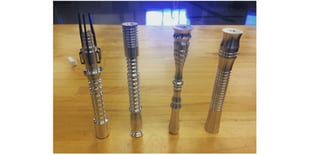Two Project Lead The Way (PLTW) team members – Senior Vice President & Chief Engagement Officer David Dimmett and Engagement Team Vice President, West Region Susan Castillo – recently appeared on the Seth Leibsohn Show to discuss science, technology, engineering, and mathematics (STEM) education and its impact on workforce and economic development, community, national security, and more.
Listen to the full interview below or on Soundcloud, and read on for interview excerpts.
Susan Castillo on STEM learning in PLTW classrooms:
“This is a way of learning that really connects with kids in a very personal, relevant way. I get inspired every time I go into one of our classrooms and see kids engaged (and) see teachers who are inspired and excited about what they see happening for their students, as well.”
Susan Castillo on students leading their own learning:
“When you have kids getting excited and they’re engaged, they really start to own their own learning. And that’s the power of what we do. (PLTW) create(s) the environment for that to happen for students. And once they own it, then you can’t stop them – they just soar. It’s very exciting to see.”
David Dimmett on multidisciplinary, relevant learning:
“What I love about the elementary program – and really across the K-12 continuum for us – is that students are using their knowledge, period – from language, from technology. They’re using all those different content areas to come together and solve a real problem. When I’m traveling around visiting (PLTW) classes, I just don’t hear from our students, ‘Why are we learning this?’”
Susan Castillo on career opportunities in STEM:
“The fastest-growing sector of job growth is in the STEM fields, and those are higher-paying jobs. They also require specific skills: computational skills, knowing how to collaborate, knowing how to be problem-solvers, knowing how to be critical thinkers, knowing how to communicate well. All of these things are incredibly important to the employers who are looking for people to fill those STEM jobs.”
David Dimmett on the holistic view of art, design, and technology:
“When you look at the world this way, it really changes your daily experience, and you look at bridges differently, you look at products like your personal computer differently. We move from being just consumers of products to being producers and makers, or at the very least, more thoughtful consumers. This is one of the challenges for us with students, who are great on their devices but don’t always understand what’s behind the device and how that works. One of our goals is to really help students not just be consumers but to be producers, to be makers, to be authentically engaged in seeing the world around them in that way.”
Excerpts have been condensed and edited for clarity.


